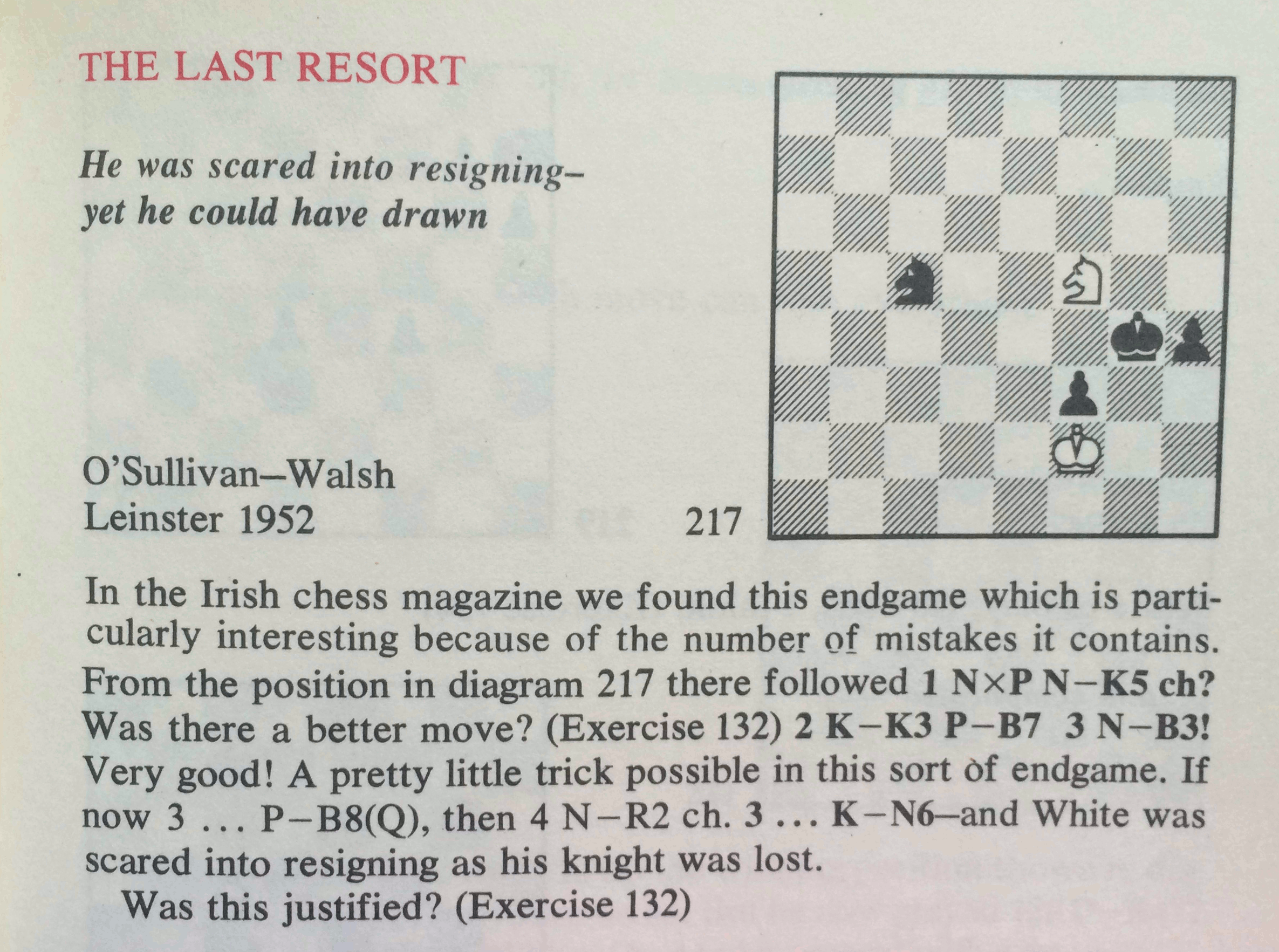The ending in the last post was given in the excellent book Chess Combination as a Fine Art by Werner Golz and Paul Keres (Pitman 1976), a compilation of puzzles originally published by Kurt Richter in Schach. On p. 149 we have:
Answering the second question first, no, resignation was not justified, because after 4. Ke2 Nc3+ 5. Kf1 Kxf3 White is stalemated, and Black has nothing better.
For the first part of the exercise, after 1. Nxh4, Black had indeed something better. On 1. … Nd3+! 2. Ke3 f2 3. Nf3 Kg3 4. Ke2 Nc1+! 5. Kf1 Nb3 6. Ke2 Nd4+! 7. Nxd4 Kg2 Black promotes the pawn.
The position also featured in Endgame Tactics by the correspondence chess GM G. C. van Perlo (New in Chess 2006), an acclaimed book that won both English Chess Federation and ChessCafe Book of the Year awards. On pages 390-91 we have the same ending, now given as O’Sullivan-Walsh, Leicester 1952, with the variations above. Van Perlo also points out that from the original position White can draw via 1. Ne3+!, e.g. 1. … Kf4 2. Nd5+ Ke4 3. Nc3+ (which went unremarked by Golz and Keres).
And finally the recent and similarly acclaimed Pump Up Your Rating by Axel Smith (Quality Chess 2013) (ChessCafe Book of The Year) gives the game as O’Sullivan-Walsh, Leinster 1952 and takes it up after 1. Nxh4: Black to move and win (pages 260, 264-65). “There are only five pieces in the starting position, but it’s nevertheless very difficult. The exercise comes from one of the books Tikkanen used, and I solved it every second month. I still had problems the fifth time!”
There are two remaining puzzles, related to the game itself. What was the event, since “Leinster” is unspecific? And was White Barney O’Sullivan (Irish champion 1939 and 1946) or Dónal J. O’Sullivan (Irish champion 1948, 1956, and 1957)? Answers in part III.

